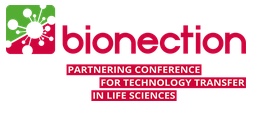(by Juliette Krebs, Roy Wieland Stöhr and Katja Winkler)
What are the current trends in the health care sector and which barriers complicate the implementation of new findings in daily routine in a hospital or doctor´s surgery?
To answer this and related questions the authors visited the two-day German Partnering Conference for Technology Transfer in Life Sciences: bionection. After five years, the bionection took place on its starting point – at the “Deutsches Hygiene-Museum Dresden” – and focussed mainly on the topics medical technology and flexible electronics, diagnostics and analytics, new oncological concepts, smart medical devices as well as bioinformatics.

The presentation of the American project “Dr. Watson” at the bioinformatics panel helped us answering the question: can artificial intelligence support doctors’ decisions? Yes, as the IBM Deutschland GmbH pointed out by help of the example Memorial Sloan Kettering Cancer Center: the cognitive computing system “Watson Oncology” suggests a treatment with a positive outcome of 80-90%. Five years ago, these suggestions were secondary. Today, if the doctor refuses the suggested treatment, he needs a justification. Watson works with selected data sources like study data or medical books to be a reliable advisor.

Besides the panel presentations on each main topic, we focused on the new designed “Innovationsforum flexMED”. We experienced a verbal exchange between a representative from the medical sector and one from the sector of flexible electronics. But why using flexible electronics? The requirements of medical products are extensive and flexible electronics can meet many of these requirements because of their flexibility, thinness, lightness, and transparency. Moreover, they are also environmentally friendly.
In the following, we want to summarize the most inspiring and fascinating projects (cf. figure below). For example, we learned about the intelligent packaging of medicine called CerePak® with tiny hidden microprocessors that record date, time and location of each pill. In this way, tracking the removal of each tablet is in near future. Other national and international projects dealt with issues like Smart labels for medication from Faubel, VitalPatch®-biosensors that collect vital data, e.g. heart rate and skin temperature, and active medical implants like the retina implant which helps blind persons to get back a part from their vision. A good example on how medicine and flexible electronics work hand in hand is the European project “Medilight”, which investigates the usage of light in medicine. One new treatment uses light-emitting diodes (short: LEDs) integrated in a band-aid for a faster healing of wounds. It is a new generation of the conventional band-aid: the “intelligent band-aid”. The engineers recognized that blue light improves the growth of cells and can be used to observe bacterial infections.

Furthermore, the CEO of the association “biosaxony e. V.” – the cluster for biotechnology and medicine in Saxony – introduced other national projects. He presented current medicine trends in Saxony like digitalization, to improve the integration between medical and information technology, as well as more involvement of bio- and nanotechnologies. The three main points which flow into the new cluster “Smart medical devices and therapies” are:
- Integrated intervention to support the surgical procedure
- Integrated information to monitor medical parameter in and outside of the hospital
- Innovative implants for further development of passive and active implants
Nevertheless, there are quite a lot of barriers in the development and release of new medical products like the licensing process, long testing periods and one of the main aspects in the health care sector: hygiene and sterilization. In addition, there are also problems in the digitalization of the health care sector, for instance, the data privacy and who has claim on it. Another challenge is the scaling-up problem. Nowadays, a solution is mostly only suitable for a small sector or a specific problem and cannot be applied in a global manner. Furthermore, hospitals have difficulties caused by the delayed reimbursement from cost bearers after implementing innovations, as one practitioner from the “Herzzentrum und Helios-Park-Klinikum Leipzig” mentioned.
As part of the panel “smart medical devices”, Julia Richter, TU Chemnitz, presented an assistance system for the continuation of home-based therapy exercises . This very promising approach aims to provide a post-operative rehabilitation-based and affordable professional therapy, which enables a feedback-based therapy at home where no therapist is available – a particularly relevant topic due to demographic changes in Saxony. Currently, the project consortium, which also includes the professorship of Wirtschaftsinformatik, esp. Systems Engineering, TU Dresden, is looking for suitable sponsors to achieve an innovative further development of the pilot (cf. Figure 3).

We suppose you have been asking yourself what our headline – nuts and nutcrackers – has to do with biotechnology and medical technology. Nuts were taken to symbolize medical issues or requirements and these nuts needed to be cracked by the nutcrackers, e.g. the flexible electronics.
The junior research group Care4Saxony thanks the students Juliette Krebs and Roy Wieland Stöhr for their participation in the bionection and their great contribution to the above article!
References
